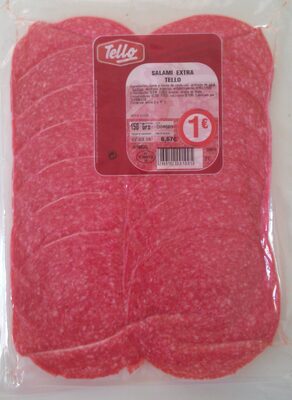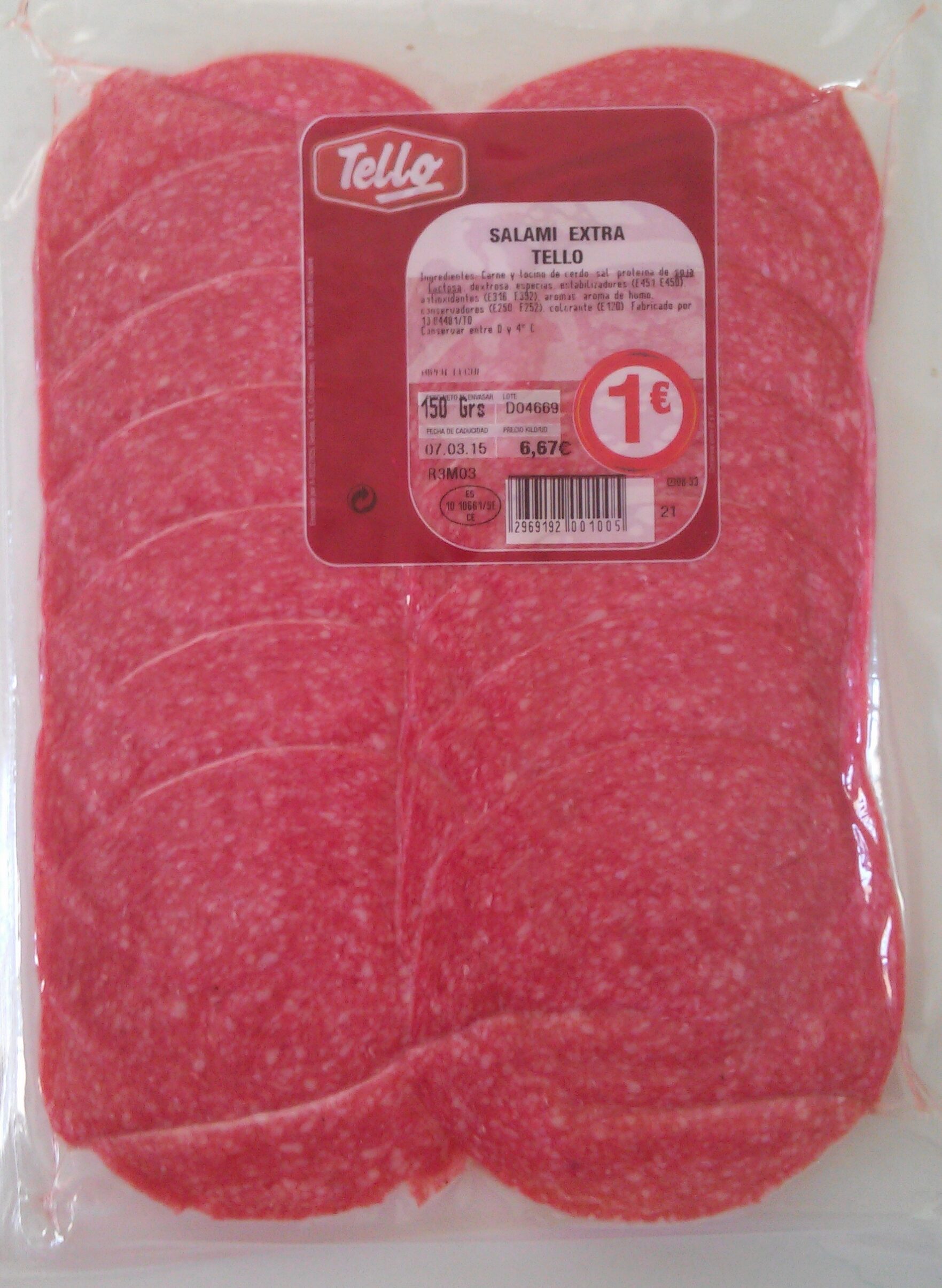Salami extra - Tello - 150g
This product page is not complete. You can help to complete it by editing it and adding more data from the photos we have, or by taking more photos using the app for Android or iPhone/iPad. Thank you!
×
Barcode: 2969192001005 (EAN / EAN-13)
Common name: embutidos
Quantity: 150g
Packaging: Plastic
Brands: Tello
Categories: Meats and their products, Meats, Prepared meats
Manufacturing or processing places: Madrid
Traceability code: ES 10.10661/SE CE
Countries where sold: Spain
Matching with your preferences
Health
Ingredients
Food processing
Additives
Ingredients analysis
The analysis is based solely on the ingredients listed and does not take into account processing methods.
Nutrition
Environment
Packaging
Transportation
Report a problem
Data sources
Product added on by malikele
Last edit of product page on by packbot.
Product page also edited by maylord, thaialagata.
If the data is incomplete or incorrect, you can complete or correct it by editing this page.




